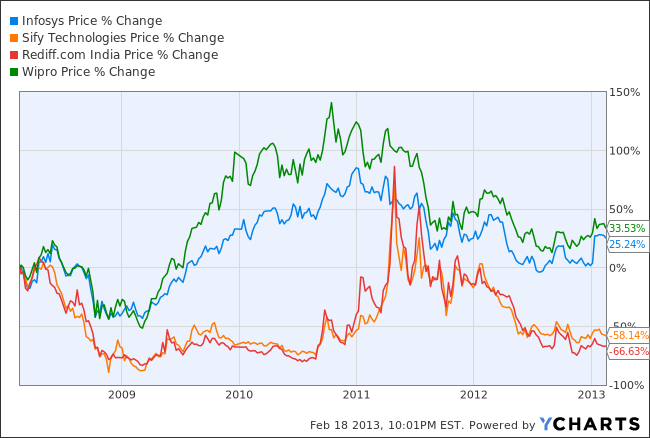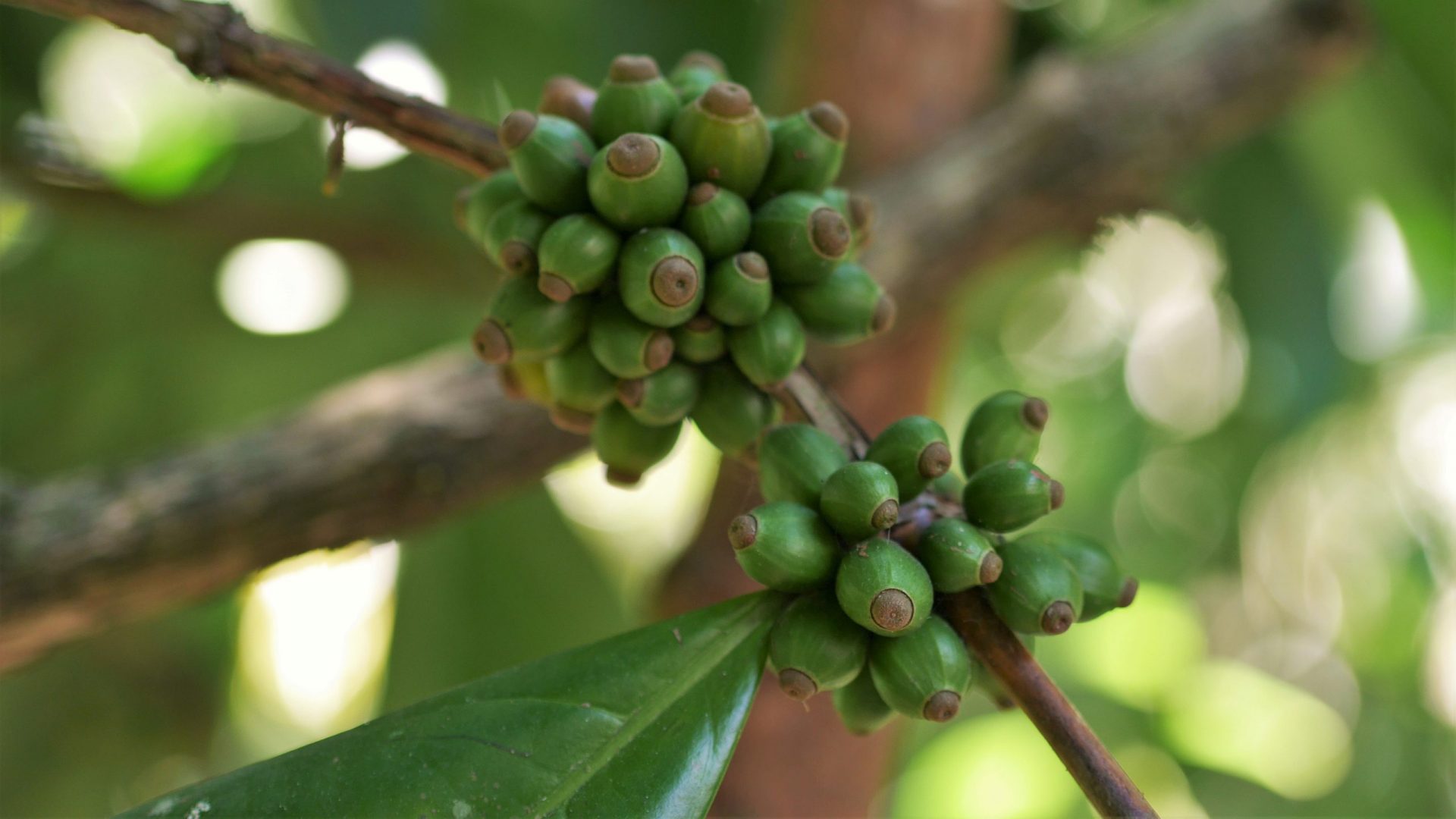This article also appeared at The Motley Fool.
In part 1 of this series, I covered ETFs that invest exclusively in India. In part 2, I covered CEFs and mutual funds. In this article, I’ll look at ADRs’ premiums or discounts vs. their underlying securities, and talk about Indian technology ADRs.
Lets start with a list of all ADRs and their relation to the underlying stock.
| Company | Stock Quote (INR) | ADR Quote (USD) | ADR Premium/Discount %* |
|---|---|---|---|
| Dr. Reddys Labs | 1800.55 | 33.88 | 2.21 |
| HDFC Bank | 675.30 | 39.84 | 6.43 |
| ICICI Bank | 1121.70 | 43.17 | 4.38 |
| Infosys | 2776.55 | 51.40 | 0.61 |
| Rediff | N/A | 2.94 | 0.00 |
| Sify | N/A | 2.03 | 0.00 |
| Tata Motors | 305.80 | 27.86 | -0.98 |
| Sterlite Industries | 101.00 | 7.39 | -0.59 |
| TCL | 233.45 | 8.11 | -5.93 |
| Wipro | 402.10 | 9.20 | 19.58 |
| WNS | N/A | 14.39 | 0.00 |
*As of Friday, Feb. 15.
As you can see, most Indian ADRs are trading at a premium to their underlying stock in India, with the largest premium belonging to Wipro. Four of the 11 companies are technology companies: Infosys (NYSE: INFY), Rediff (NASDAQ: REDF), Sify (NASDAQ: SIFY) and Wipro (NYSE: WIT). Let’s look at these in more detail.

Only Wipro and Infosys seem to be consistently growing revenues.

EPS trends paint a similar picture of consistent growth only by Wipro and Infosys. The data for Sify was missing at YCharts, but the company posted a loss in its fiscal year ending 2012, albeit a smaller one than it recorded in 2011.

The stock prices of both Wipro and Infosys have not kept up with either their EPS or revenue growth, which currently reflects of the Indian stock market as a whole. So 2013 is a good year to invest in India, in spite of its slowing economic growth.
The valuations of stocks, especially of those like Infosys and Wipro are likely to catch up with their growth rates. But is Wipro worth the premium over the underlying stock when compared to Infosys? The current P/E of Wipro is around 18, and Infosys around 16.
I would say no. Among the Indian technology ADRs, I recommend Infosys, which is currently undervalued compared to its five-year average P/E of 20.
Stay tuned for coverage of the rest of the Indian ADRs.
